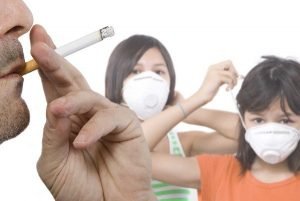Summary
Chronic obstructive pulmonary disease (COPD) is a serious, chronic lung condition that restricts airflow and causes breathing difficulties. It includes two main types: emphysema, where the air sacs are damaged, and chronic bronchitis, which involves ongoing inflammation of the bronchial tubes.
The primary cause of COPD is long-term exposure to lung irritants, most commonly cigarette smoke, though other harmful chemicals and airborne pollutants can also contribute to its development. Key symptoms of COPD include severe shortness of breath, chronic cough, wheezing, and excessive mucus production. These symptoms tend to worsen over time, limiting a person’s ability to engage in daily activities.
Treatment for COPD aims to improve airflow and manage symptoms with medications like bronchodilators (which relax and open the airways) and corticosteroids (which reduce inflammation). In advanced cases, surgical interventions such as lung volume reduction or lung transplantation may be considered to enhance lung function and quality of life.
Table of Contents
- Symptoms of Chronic Obstructive Pulmonary Disease (COPD)
- Types of Chronic Obstructive Pulmonary Disease (COPD)
- Diagnostic Procedures for Chronic Obstructive Pulmonary Disease (COPD)
- Complications of Untreated Chronic Obstructive Pulmonary Disease (COPD)
- Causes of Chronic Obstructive Pulmonary Disease (COPD)
- Prevention of Chronic Obstructive Pulmonary Disease (COPD)
- Risk Factors for Chronic Obstructive Pulmonary Disease (COPD)
- Chronic Obstructive Pulmonary Disease (COPD) FAQs
Symptoms of Chronic Obstructive Pulmonary Disease (COPD)

Image Source: www.freepik.com
In the early stages, COPD symptoms are mild and may go unnoticed or be mistaken for a common cold or cough. Initial signs of COPD include:
- Shortness of breath, especially during exercise.
- Mild but recurring cough. Coughing may seem mild but persists over time.
- Frequent throat clearing. There’s a recurring need to clear the throat due to irritation.
As symptoms progress, individuals may experience the following:
- Shortness of breath, even during light activities or climbing stairs.
- Wheezing. A whistling sound when breathing, often due to restricted airways.
- Chest tightness. A feeling of pressure or constriction in the chest.
- Persistent coughing, with or without mucus.
- Daily need to expel mucus. An increased amount of mucus production in the chest.
- Frequent respiratory infections. Higher susceptibility to colds, flu, and lung infections.
- Loss of energy. General fatigue and weakness can become noticeable.
In later stages, symptoms may worsen significantly:
- Extreme fatigue. The body’s energy levels become depleted.
- Swelling in the feet, ankles, or legs. This can indicate complications affecting blood flow.
- Weight loss. Unintentional weight loss may occur due to the increased effort needed to breathe.
Immediate medical attention is essential if the following symptoms appear:
- Bluish nails or lips. This is a sign of low blood oxygen levels.
- Severe breathlessness that interferes with speaking.
- Confusion or fainting. Low oxygen levels can lead to mental fog or unconsciousness.
- Rapid heartbeat. The heart may race as it struggles to supply oxygen to the body.
Smoking and exposure to secondhand smoke can exacerbate these symptoms and increase the rate of COPD progression. Early diagnosis and management are crucial to slowing the disease and improving quality of life.
Types of Chronic Obstructive Pulmonary Disease (COPD)
There are two primary types of COPD:
- Chronic bronchitis. This is a long-term form of COPD characterized by chronic inflammation of the bronchial tubes, leading to persistent cough and mucus (phlegm) production. It causes narrowing of the airways, making it harder for air to flow in and out of the lungs.
- Emphysema. Emphysema involves gradual damage to the alveoli, or air sacs, in the lungs. Over time, this damage reduces the lung’s elasticity and capacity to release air, leading to trapped air and difficulty in breathing.
Most COPD patients have a combination of both chronic bronchitis and emphysema, with symptoms that may vary in intensity based on the extent of lung damage.
Diagnostic Procedures for Chronic Obstructive Pulmonary Disease (COPD)
Diagnosing COPD involves a combination of medical history evaluation, physical exams, and tests to assess lung function and rule out other conditions. Early diagnosis is essential to managing COPD effectively and preventing progression. Key diagnostic procedures include:
- Medical history and physical examination. The doctor will review the patient’s symptoms, smoking history, exposure to lung irritants, and any family history of respiratory disease. They may listen for wheezing or other abnormal lung sounds that suggest airflow obstruction.
- Spirometry. Spirometry is a simple, non-invasive test that measures lung function by assessing how much air a person can exhale and how quickly. In this test, the patient blows into a tube connected to a spirometer, which records the airflow. Spirometry is the most common test for diagnosing COPD, as it reveals any airflow limitations typical of COPD.
- Chest X-ray. A chest X-ray provides images of the lungs and can help detect emphysema, one of the main forms of COPD. It also rules out other potential causes of symptoms, such as lung infections or congestive heart failure.
- CT scan. A computed tomography (CT) scan offers a more detailed view of the lungs and can identify emphysema and other structural lung issues. CT scans may also help determine if a patient is a candidate for lung surgery.
- Arterial blood gas (ABG) test. This test measures oxygen and carbon dioxide levels in the blood, assessing how well the lungs are delivering oxygen to the blood and removing carbon dioxide. ABG testing is usually done in more advanced cases to evaluate the severity of COPD and determine oxygen therapy needs.
- Pulse oximetry. Pulse oximetry is a quick, non-invasive test that measures blood oxygen levels by attaching a small device to the fingertip. While it doesn’t replace ABG testing, it provides immediate information about oxygen saturation, which is useful in routine monitoring.
- Alpha-1 antitrypsin deficiency testing. In patients who develop COPD at a young age, have no smoking history, or have a family history of respiratory disease, doctors may perform a blood test for alpha-1 antitrypsin deficiency. This genetic disorder affects the lungs and is linked to an increased risk of COPD.
These diagnostic tests provide essential information for assessing COPD severity and creating an individualized treatment plan. Early and accurate diagnosis is critical for effective COPD management, helping to slow disease progression and improve quality of life.
Complications of Untreated Chronic Obstructive Pulmonary Disease (COPD)
When COPD is left untreated, the condition can progress and lead to a range of serious complications, affecting multiple body systems and reducing quality of life. Some of the primary complications include:
- Respiratory infections. People with COPD are at higher risk for frequent lung infections, such as pneumonia and bronchitis, because their weakened lung function and chronic inflammation make it easier for bacteria and viruses to invade the respiratory system. These infections can cause rapid worsening of COPD symptoms and increase the risk of hospitalization.
- Heart problems. COPD can lead to increased pressure in the lung arteries, putting strain on the heart, particularly the right side. This condition, called cor pulmonale, may cause right-sided heart failure, leading to symptoms such as leg swelling, fatigue, and shortness of breath. COPD is also linked to an increased risk of other heart issues, including heart attacks.
- Lung cancer. Long-term exposure to smoking or other lung irritants increases the risk of both COPD and lung cancer. Individuals with COPD, especially those who smoke, are at a higher risk of developing lung cancer.
- High blood pressure in the lung arteries (pulmonary hypertension). COPD can increase blood pressure in the pulmonary arteries, making it harder for the heart to pump blood through the lungs. Pulmonary hypertension can worsen shortness of breath and contribute to heart complications.
- Depression and anxiety. Living with COPD’s physical limitations and difficulty breathing can lead to emotional challenges, including depression and anxiety. The constant need to manage symptoms, coupled with reduced activity and social isolation, can negatively impact mental health.
- Weight loss and muscle weakness. Advanced COPD can make it difficult to eat and absorb nutrients effectively, leading to unintentional weight loss. Additionally, as the body struggles with reduced oxygen levels, muscles can weaken, making daily tasks even more challenging.
- Reduced quality of life and increased mortality. Untreated COPD gradually reduces the ability to perform everyday activities, leading to significant disability and dependence on others. In advanced stages, COPD can lead to life-threatening complications, and without treatment, the risk of premature death increases.
- Acute respiratory failure. In severe cases, COPD can lead to respiratory failure, where the lungs are unable to provide enough oxygen or remove enough carbon dioxide from the body. This condition requires immediate medical intervention, often involving oxygen therapy or mechanical ventilation.
Managing COPD with early intervention and a comprehensive treatment plan is essential to reducing the risk of these complications. Regular monitoring, medication, lifestyle changes, and, when necessary, oxygen therapy or surgery can greatly improve quality of life and slow disease progression.
Causes of Chronic Obstructive Pulmonary Disease (COPD)

Image Source: airtoday.ph
The primary direct cause of COPD, particularly in developed countries, is smoking. Roughly 90% of individuals diagnosed with COPD are current or former smokers. Cigarette smoke contains harmful chemicals that irritate the airways and progressively damage lung tissue, leading to chronic respiratory issues over time.
Other direct causes of COPD include:
- Long-term exposure to occupational irritants. In certain jobs, such as construction, mining, and industrial work, prolonged exposure to toxic substances, fumes, and dust can cause direct damage to lung tissue, resulting in COPD. This exposure, particularly in poorly ventilated environments, causes inflammation and scarring in the lungs.
- Chronic inhalation of air pollutants and dust. Long-term exposure to high levels of air pollution, dust, and other environmental toxins can damage the respiratory system and lead to COPD. Individuals who live or work in areas with significant air pollution or dusty environments are at higher risk.
- Indoor smoke from cooking fuels. In many regions, cooking with fuels like wood, coal, or LPG in unventilated spaces can release harmful smoke and particulates. Frequent exposure to this smoke can directly injure lung tissues and lead to COPD, particularly in households that rely on these fuels daily.
- Genetic factors: Alpha-1 antitrypsin deficiency. A rare genetic disorder, alpha-1 antitrypsin deficiency, can cause COPD, even in non-smokers. This condition prevents the body from producing enough of the protein that protects the lungs, making them more susceptible to damage from irritants and leading to early-onset COPD.
These direct causes highlight how both environmental exposures and genetics can contribute to the development of COPD. Preventive measures, such as avoiding smoking and reducing exposure to harmful substances, play a crucial role in reducing the risk of developing COPD.
Prevention of Chronic Obstructive Pulmonary Disease (COPD)

Image Source: vietnamnews.vn
COPD has specific known causes, with smoking being the primary one. Therefore, avoiding or quitting smoking is essential to prevent this disease. For other direct causes of COPD, additional preventive measures can also help reduce the risk:
- Wearing a face mask while traveling, especially when passing through polluted or high-traffic areas. Masks can help filter out harmful particulates and pollutants, protecting your lungs from direct exposure.
- Avoiding exposure to secondhand smoke. Try to stay away from people who are smoking, as inhaling secondhand smoke can also damage the lungs over time, even if you don’t smoke yourself.
- Ensuring good ventilation at home. Open windows regularly to allow fresh air to circulate and help clear out dust, smoke, and other airborne pollutants. A well-ventilated space reduces indoor air pollution, which is especially important if you use cooking fuels like wood or coal.
These preventive measures are practical steps to reduce exposure to lung irritants and protect respiratory health, particularly for those at higher risk of developing COPD due to environmental factors.
Risk Factors for Chronic Obstructive Pulmonary Disease (COPD)

Image Source:www.futurity.org
The risk of developing COPD increases based on the following factors:
- Exposure to cigarette smoke. The leading risk factor for COPD is long-term smoking. The longer one smokes or the more cigarettes smoked daily, the higher the risk of developing chronic obstructive pulmonary disease. Even people exposed to secondhand smoke are at risk, as inhaling smoke from others can damage lung tissue over time.
- Asthma combined with smoking. Having asthma, particularly when combined with smoking, significantly increases the risk of developing COPD. Asthma already involves inflammation in the airways, and smoking compounds this risk by adding further lung damage.
- Occupational exposure to fumes and toxic substances. Long-term exposure to industrial fumes, chemicals, and dust in the workplace can damage the lungs and increase the likelihood of developing COPD. Jobs in construction, manufacturing, mining, and agriculture often expose workers to these risks.
- Exposure to fuel emissions. Exhaust from vehicles, factories, and cooking fuels like LPG or wood can contribute to lung irritation and increase COPD risk, especially in areas with high pollution levels.
- Advancing age. COPD develops slowly, with symptoms often becoming apparent around age 40 or older. Lung function naturally declines with age, making older individuals more vulnerable to the disease.
- Genetic factors. Genetic factors, such as alpha-1 antitrypsin deficiency, can make certain individuals more prone to COPD. This rare genetic disorder affects the body’s ability to protect the lungs, leading to early onset COPD, even in non-smokers.
Understanding these risk factors can help individuals take preventive steps, particularly by avoiding smoking, minimizing exposure to lung irritants, and seeking early medical evaluation if symptoms appear.
Chronic Obstructive Pulmonary Disease (COPD) FAQs
Here are some frequently asked questions about chronic obstructive pulmonary disease (COPD) to help you understand this condition, its causes, symptoms, and treatment options. Whether you’re newly diagnosed or looking for ways to manage COPD, these answers provide essential information to guide you.
- What is COPD?
COPD, or chronic obstructive pulmonary disease, is a long-term lung disease that obstructs airflow, making it difficult to breathe. It includes conditions such as emphysema and chronic bronchitis, both of which cause inflammation and damage in the lungs, leading to restricted airflow and reduced oxygen levels. - What are the main causes of COPD?
The primary cause of COPD is long-term smoking, as cigarette smoke damages lung tissue over time. Other causes include long-term exposure to environmental pollutants, occupational dust, fumes, secondhand smoke, and a genetic condition called alpha-1 antitrypsin deficiency. - What are the common symptoms of COPD?
Common symptoms include shortness of breath, chronic cough, wheezing, frequent respiratory infections, chest tightness, and excessive mucus production. As the disease progresses, symptoms may worsen, limiting daily activities. - Who is at higher risk of developing COPD?
People at higher risk include long-term smokers, those exposed to air pollutants or occupational hazards, individuals with a family history of COPD, and people over 40 years old. Additionally, those with asthma who smoke are at an increased risk of developing COPD. - How is COPD diagnosed?
COPD is diagnosed through a combination of medical history, physical examination, and tests such as spirometry (to measure lung function), chest X-rays, CT scans, and blood tests to check for oxygen levels and alpha-1 antitrypsin deficiency. - Can COPD be cured?
There is currently no cure for COPD, but it can be managed effectively with medications, lifestyle changes, oxygen therapy, and in some cases, surgery. Early diagnosis and treatment can help slow disease progression and improve quality of life. - How is COPD treated?
Treatment usually includes bronchodilators (to open airways), corticosteroids (to reduce inflammation), and medications to manage symptoms. In severe cases, oxygen therapy or surgery, such as lung volume reduction or lung transplantation, may be recommended. Lifestyle changes, including quitting smoking and regular exercise, are also essential parts of treatment. - What can I do to prevent COPD?
The most effective way to prevent COPD is to avoid smoking and exposure to lung irritants. If you work in environments with dust or fumes, wearing protective equipment can reduce your risk. Maintaining a healthy lifestyle with regular exercise and a balanced diet also supports lung health. - Can diet and exercise help with COPD?
Yes, diet and exercise play crucial roles in managing COPD. Regular exercise can strengthen respiratory muscles, while a balanced diet can help maintain energy and prevent weight loss. Consult a doctor before starting an exercise program, as it may need to be tailored to your condition. - Is COPD a progressive disease?
Yes, COPD is a progressive disease, meaning it worsens over time, especially if left untreated. However, with proper management, the rate of progression can be slowed, allowing patients to lead a more active and comfortable life. - Can people with COPD live a normal life?
With early diagnosis, consistent treatment, and lifestyle modifications, many people with COPD can manage their symptoms and maintain a good quality of life. Support from healthcare providers, regular monitoring, and proactive care are essential for living well with COPD. - How often should COPD patients see their doctor?
COPD patients should see their doctor regularly for monitoring, typically every 3-6 months. More frequent visits may be necessary if symptoms worsen, medications are adjusted, or if new complications arise.


